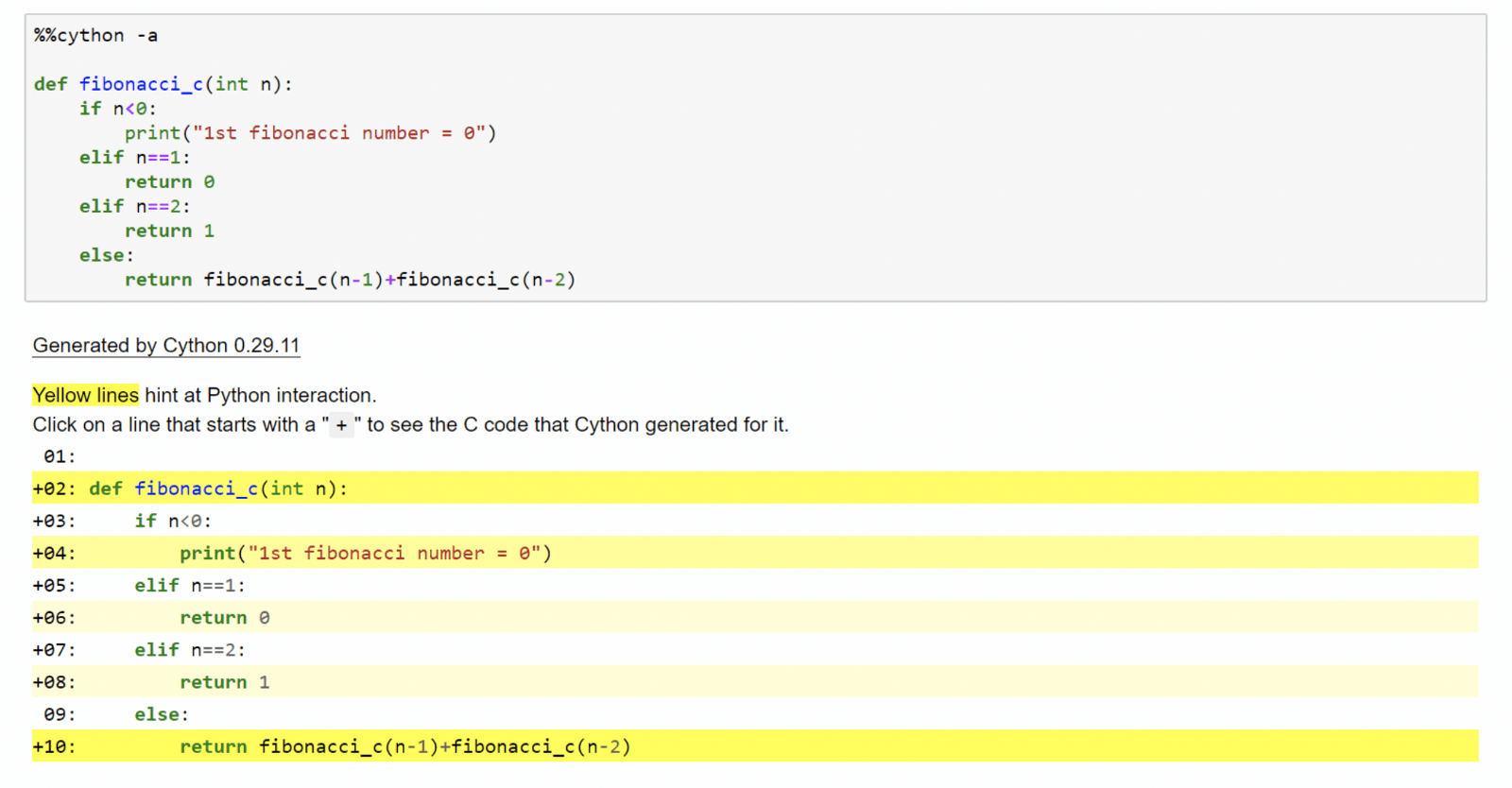今日推荐开源项目:《你是什么垃圾 trash-classify》
今日推荐英文原文:《Speed Up Your Python Code with Cython》

今日推荐开源项目:《你是什么垃圾 trash-classify》传送门:GitHub链接
推荐理由:兴许已经有人被垃圾分类搞疯了,即使真的招了一头猪来做垃圾分类员,但是猪能吃猪不能吃的分类方法有的时候也不管用,到了那种时候,兴许这个项目……也不会管用。你可以拍一张照片,然后这个项目会识别出上面可能有的一些垃圾,然后告诉你它们是什么垃圾。那么问题来了,抓了蟑螂的蟑螂屋究竟是什么垃圾呢?
今日推荐英文原文:《Speed Up Your Python Code with Cython》作者:Lukas Frei
原文链接:https://towardsdatascience.com/speed-up-your-python-code-with-cython-8879105f2b6f
推荐理由:有利有弊,Python 在更加灵活的同时带来的弊端就是——你可能需要上个厕所才能得到结果,而 Cython 可能用来补足这个弊端
Speed Up Your Python Code with Cython
Introduction
If you have ever coded in Python, you have probably spent more time waiting for certain code blocks to execute than you would like. While there are ways to make your code more efficient, it will most likely still be slower than C code, for instance. This boils down mainly to the fact that Python is a dynamic programming language and moves many things to runtime that C takes care of during compilation. Nevertheless, if you, like me, enjoy coding in Python and still want to speed up your code you could consider using Cython. While Cython itself is a separate programming language, it is very easy to incorporate into your e.g. Jupyter Notebook workflow. Upon execution, Cython translates your Python code to C, often times significantly speeding it up.Installing Cython
In order to be able to use Cython you are going to need a C compiler. Thus, the installation process differs based on your current OS. For Linux, the GNU C Compiler (gncc) is usually present. For Mac OS, you can download Xcode to get the gncc. If you should be using Windows, the installation process is a little more complex. More info here on Cython’s GitHub. Once you have got your C compiler, all you need to run in your terminal is:pip install Cython
How to Use Cython
The easiest way to demonstrate Cython’s capabilities is through Jupyter Notebooks. To use Cython in our notebook, we are going to use IPython magic commands. Magic commands start with a percent sign and provide some additional features that are supposed to enhance your workflow. Generally, there are two types of magic commands:- Line magics are denoted by a single ‘%’ and only operates on one line of input
- Cell magics are denoted by two ‘%’ and operate on multiple lines of input.
%load_ext Cython
%%cython
How much faster is Cython?
How much faster Cython is compared to regular Python code really depends on the code itself. For instance, should you be running computationally expensive loops with many variables, Cython will vastly outperform regular Python code. Recursive functions will also tend to make Cython a lot faster than Python. Let’s demonstrate this with the Fibonacci sequence. This algorithm, to put it simply, finds the next number by adding up the previous two. Here is what that might look like in Python:def fibonacci(n):
if n < 0:
print("1st fibonacci number = 0")
elif n == 1:
return 0
elif n == 2:
return 1
else:
return fibonacci(n-1) + fibonacci(n-2)
 As you can see, finding the 39th number in the sequence took 13.3 seconds to compute. Wall time here refers to the total time elapsed from start to finish of the call to the function.
Let’s define the same function in Cython.
As you can see, finding the 39th number in the sequence took 13.3 seconds to compute. Wall time here refers to the total time elapsed from start to finish of the call to the function.
Let’s define the same function in Cython.
 What’s going on here? As you can see, we are using some cell magic up top that allows us to use Cython in this cell. I am going to explain what the ‘-a’ option does shortly. Then, we basically take the same code as we did above except for the fact that now we have the ability to make use of static type declarations and define n to be of type integer.
As you can see, by adding ‘-a’ after the magic command, we received annotations that show us how much Python interaction there is in your code. The goal here would be to get rid of all yellow lines and have them have a white background instead. In that case, there would be no Python interaction and all code would run in C. You can also click on the ‘+’ sign next to each line to see the C translation of your Python code.
How much faster is that code? Let’s find out:
What’s going on here? As you can see, we are using some cell magic up top that allows us to use Cython in this cell. I am going to explain what the ‘-a’ option does shortly. Then, we basically take the same code as we did above except for the fact that now we have the ability to make use of static type declarations and define n to be of type integer.
As you can see, by adding ‘-a’ after the magic command, we received annotations that show us how much Python interaction there is in your code. The goal here would be to get rid of all yellow lines and have them have a white background instead. In that case, there would be no Python interaction and all code would run in C. You can also click on the ‘+’ sign next to each line to see the C translation of your Python code.
How much faster is that code? Let’s find out:
 In this case, Cython is around 6.75 times faster than Python. This clearly demonstrates the time-saving capabilities of utilizing Cython where it provides the most improvement over regular Python code.
In this case, Cython is around 6.75 times faster than Python. This clearly demonstrates the time-saving capabilities of utilizing Cython where it provides the most improvement over regular Python code.
Additional Options
In case you already know C, Cython also allows for the access of C code that the makers’ of Cython have not yet added a ready-to-use declaration for. Using the following code, for instance, you could generate a Python wrapper for a C function and add it to the module dict.%%cython
cdef extern from "math.h":
cpdef double sin(double x)
Conclusion
If you should, at times, run into the issue of having to wait for too long for your Python code to execute, Cython provides a really neatly integrated and efficient way to speed up your code. On top, it offers many capabilities to further optimize your code should you be a little more familiar with C. I would definitely recommend to thoroughly check out the documentation. If you should have any suggestions or remarks, feel free to reach out to me.下载开源日报APP:https://openingsource.org/2579/
加入我们:https://openingsource.org/about/join/
关注我们:https://openingsource.org/about/love/
